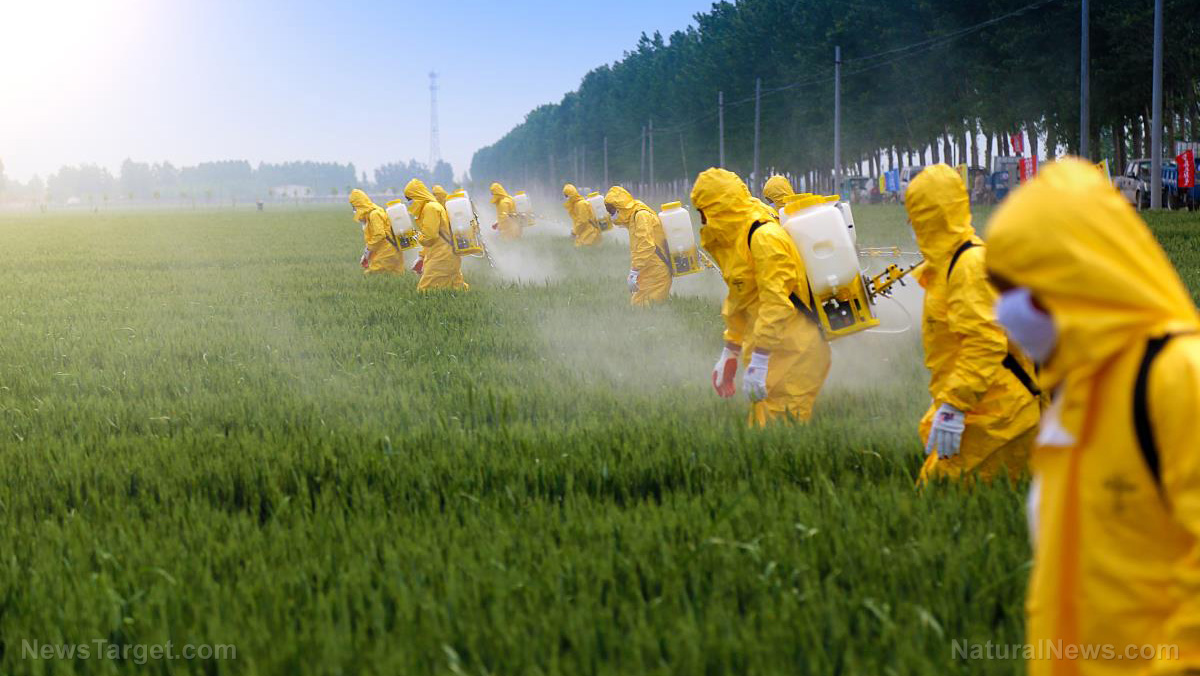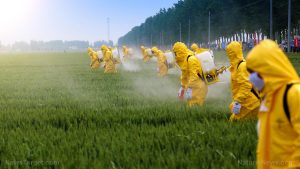Methoxychlor — toxicity, side effects, diseases and environmental impacts
11/11/2017 / By Earl Garcia

Methoxychlor is a widely used pesticide against various types of biting insects and pests such as houseflies, cockroaches, and biting flies as well as mosquito larvae and chiggers. A fact sheet published by the U.S. Environmental Protection Agency (EPA) notes that the highly toxic pesticide is commonly used on field crops, vegetables, fruits, and stored grains. Likewise, the compound is used to eliminate insects from homes, gardens, lakes, and marshes.
The article has also revealed that veterinary medicine practitioners use methoxychlor as an ectoparasiticide to get rid of parasites living on their host’s exterior. The pesticide belongs to the same chemical family as breakdown products, salts and esters as well as isomers and other derivatives. The hazardous pesticide comes in a white crystalline solid form that is usually dissolved in a liquid carrier like diesel oil.

List of known side effects
An article published on the open chemistry database Pub Chem cautions that methoxychlor is potentially carcinogenic. The entry also warns that methoxychlor exposure may lead to adverse reproductive and developmental effects such as abortions, reduced fertility, and reduced litter size. Likewise, the hazardous chemical is known to trigger other serious medical conditions such as neurotoxicity and acute toxicity.
Inhaling toxic fumes produced by the pesticide may irritate the respiratory tract. Direct eye and skin contact may also result in severe allergic reactions. The harmful chemical may also trigger the onset of central nervous system depression, progressive weakness, trembling, convulsions, and even death. Moreover, ingesting the hazardous compound may lead to digestive woes such as oral toxicity, diarrhea, and liver damage. Animal studies have also demonstrated that exposure to the pesticide may cause kidney damage.
The pesticide is usually dissolved in a liquid carrier, which means that it can be easily absorbed by the soil and contaminate groundwater. Likewise, methoxychlor is known to impact waterways and is highly toxic to aquatic animals.
Body systems affected by methoxychlor
Methoxychlor is known to primarily target reproductive health. Likewise, the toxic chemical is detrimental to the central nervous system and the digestive tract. The harmful pesticide may also negatively affect the kidneys, lungs, eyes, and the skin.
Items that can contain methoxychlor
Methoxychlor is a widely used pesticide that is used both on crops and livestock.
How to avoid methoxychlor
Exposure to the chemical is detrimental to various parts of the body. A safety data sheet published by Chem Service recommends wearing safety glasses with side shields to prevent direct eye contact. Likewise, it is advisable to wear chemical resistant gloves, an impervious apron, and thermal protective clothing to avoid skin exposure. The data sheet also suggests wearing a suitable respiratory equipment to avoid inhalation should ventilation is inadequate.
The data sheet also recommends that people who inhaled toxic fumes be taken to an area with fresh air. It is also advisable to wash the eyes and the skin with plenty of water should direct contact occur. Likewise, the data sheet notes that people who ingest the chemical should immediately rinse their mouth and keep their head low if vomiting occurs in order to prevent the chemical from reaching the lungs. The entry suggests seeking medical attention should symptoms persist.
Where to learn more
- Pesticide exposure can cause disease across four generations
- Pesticides leave behind legacy of poisoning and contamination
- Cancer-causing PCB chemicals found contaminating food supplies
- Pesticide Dangers to Human Health Carry Through Multiple Generations
- Toxic Chemicals Release Report Shows Mercury, PCB Pollution Rise Dramatically
- Toxic, cancer-causing PCBs still show up in everyday products despite decades-old ban
Summary
Methoxychlor may cause abortions, reduced fertility, and reduced litter size.
Methoxychlor triggers central nervous system depression, convulsions, and death.
Methoxychlor exposure results in oral toxicity, diarrhea, and kidney and liver damage.
Methoxychlor may cause severe respiratory, eye, and skin irritation.
Methoxychlor targets the central nervous system, the digestive tract, and reproductive health.
Methoxychlor is detrimental to the kidneys, lungs, eyes, and the skin.
Sources include:
Tagged Under:



















